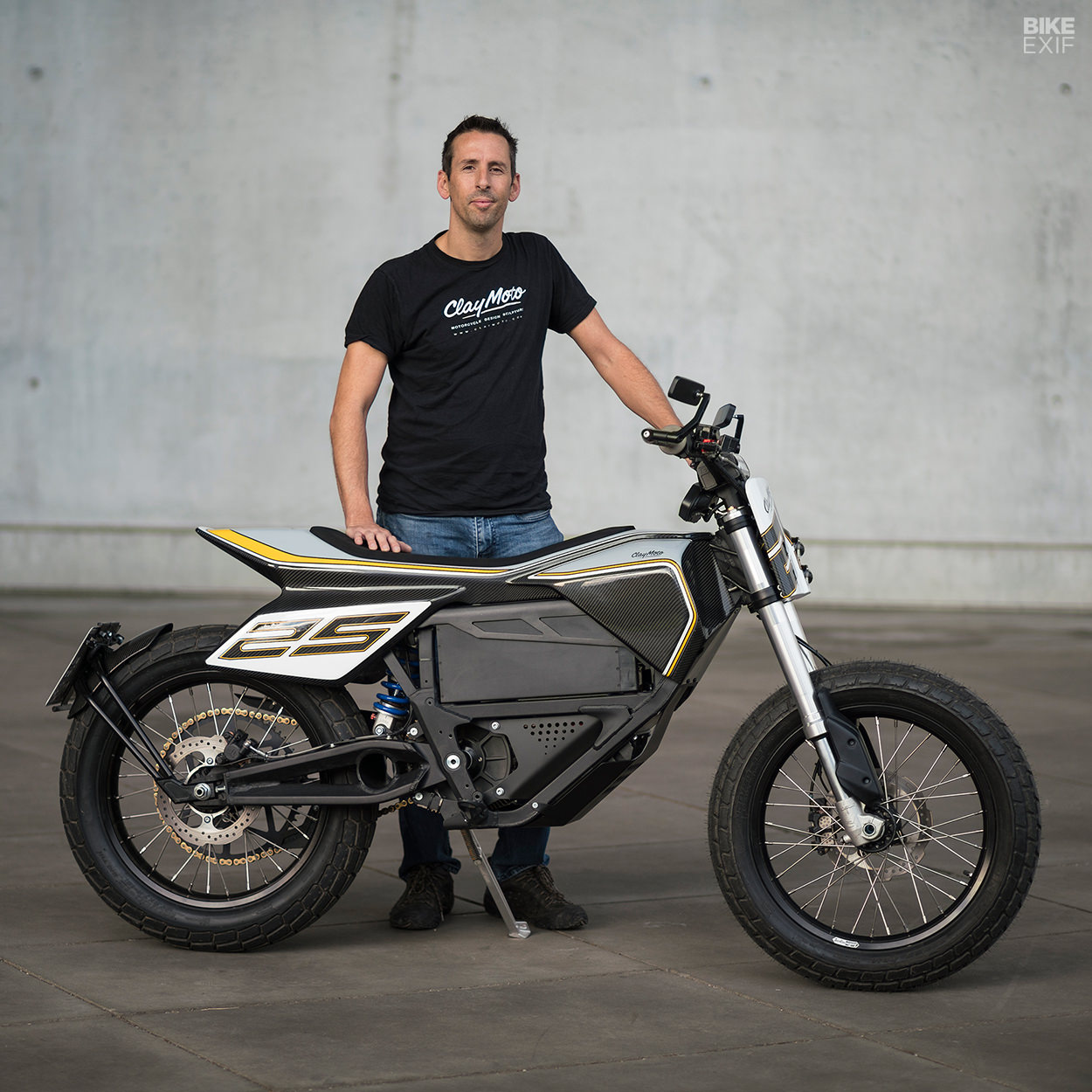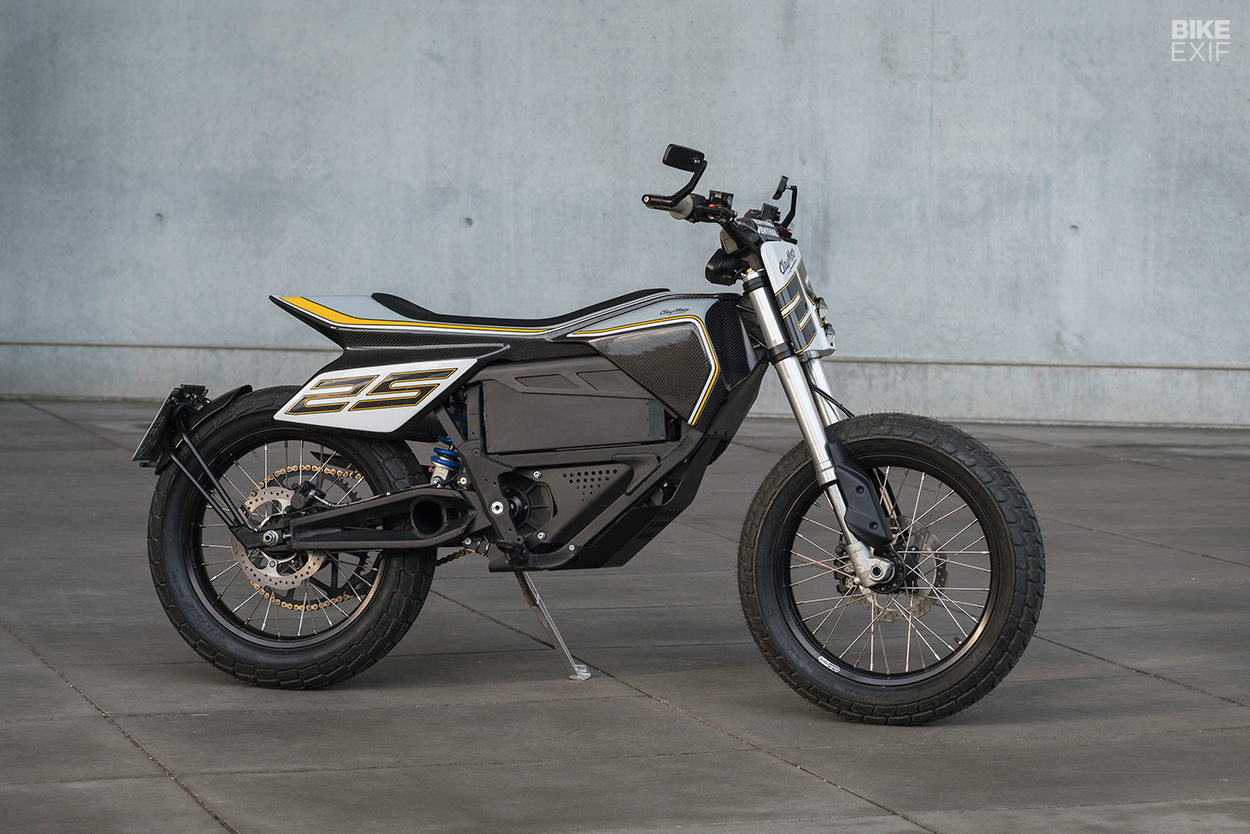
Truly great motorcycle design requires a human touch. That’s why, in a world of digital design and 3D rendering, traditional crafts are still very relevant. Especially the art of clay modeling—which is what Nick Graveley does.
The Munich-based Brit has spent the last 16 years offering his craft to major car and motorcycle OEMs, and the last seven of those have been bike work only.
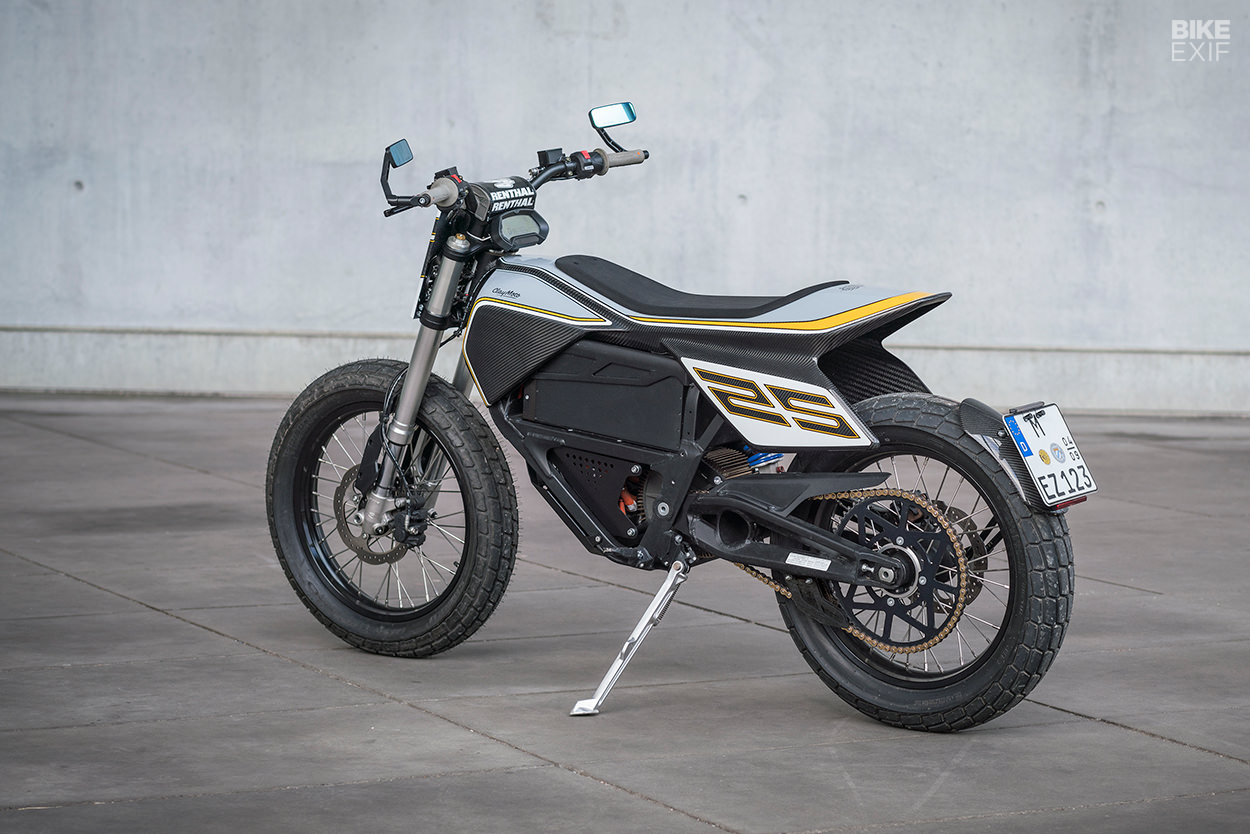
One of his clients is the electric motorcycle powerhouse Zero Motorcycles. Two years ago, Nick (who works as ‘ClayMoto’) was working with them on their latest SR/F model, when the idea for this project was conceived.
“At the time, the flat tracker movement was just gaining traction,” he tells us, “and the Zero FX seemed like an ideal base on which to build one. It’s a relatively lightweight bike in Zero’s all-electric range that was crying out for a new style.”

“It also has boatloads of torque, and the prospect of tuning the ‘engine braking’ by means of altering the level of regenerative braking through the motor seemed like nice features for a flat tracker.”
Nothing really happened with the idea, until Nick found himself back at Zero’s Californian HQ a year later for another project. They green lit Nick’s concept, and handed him a 2017 Zero FX with a 6.5 kWh battery pack to build it on.
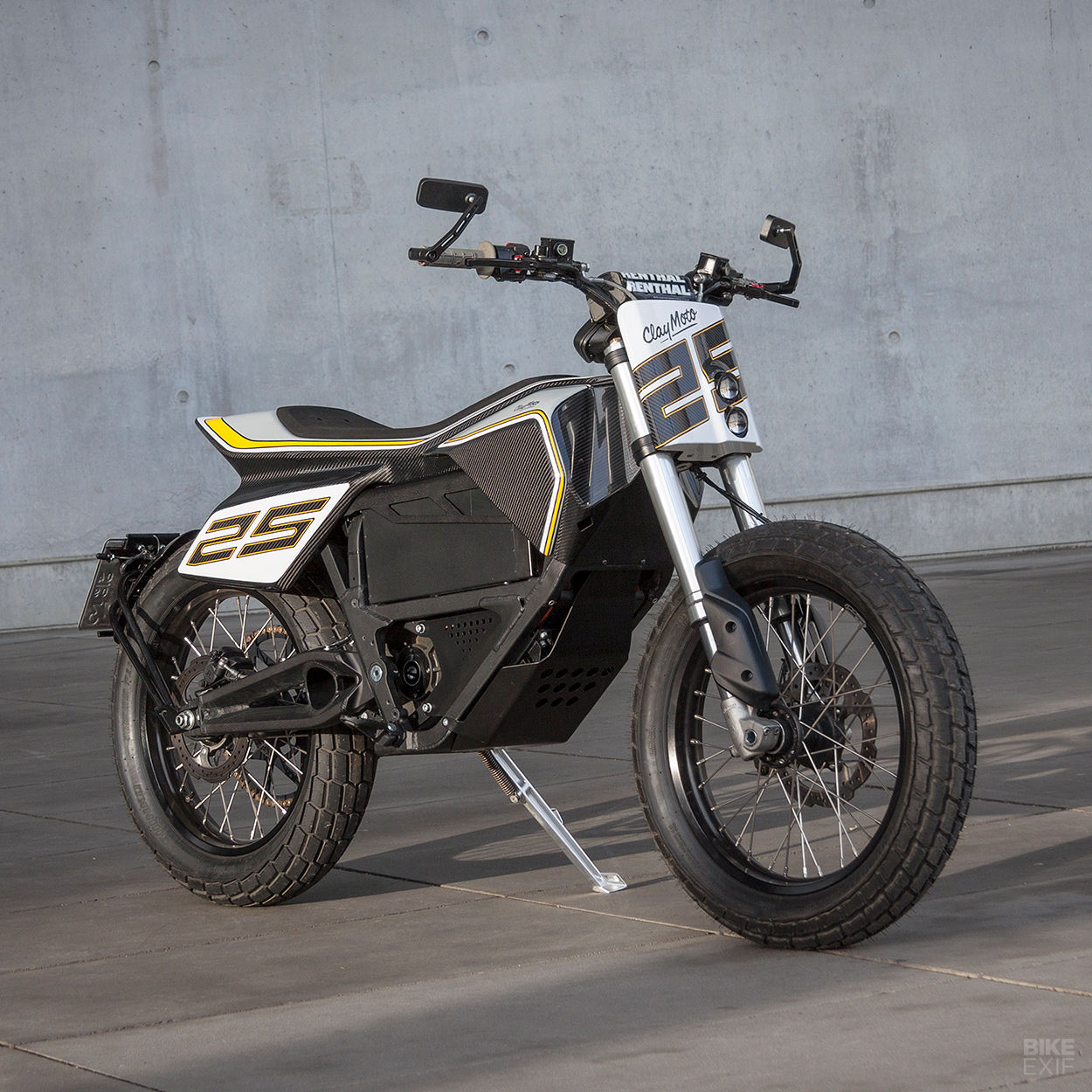
For those that love numbers, the FX makes 46 hp and 106 Nm, and has a range of between 60 km and 130 km, depending on how hard you thrash it. Perfect numbers for Nick’s ‘Quiet Riot’ project.
Despite the fact that Zero undoubtedly has every angle of the FX rendered digitally already, Nick headed straight for his usual process: sketches, followed by full-scale clay modeling.
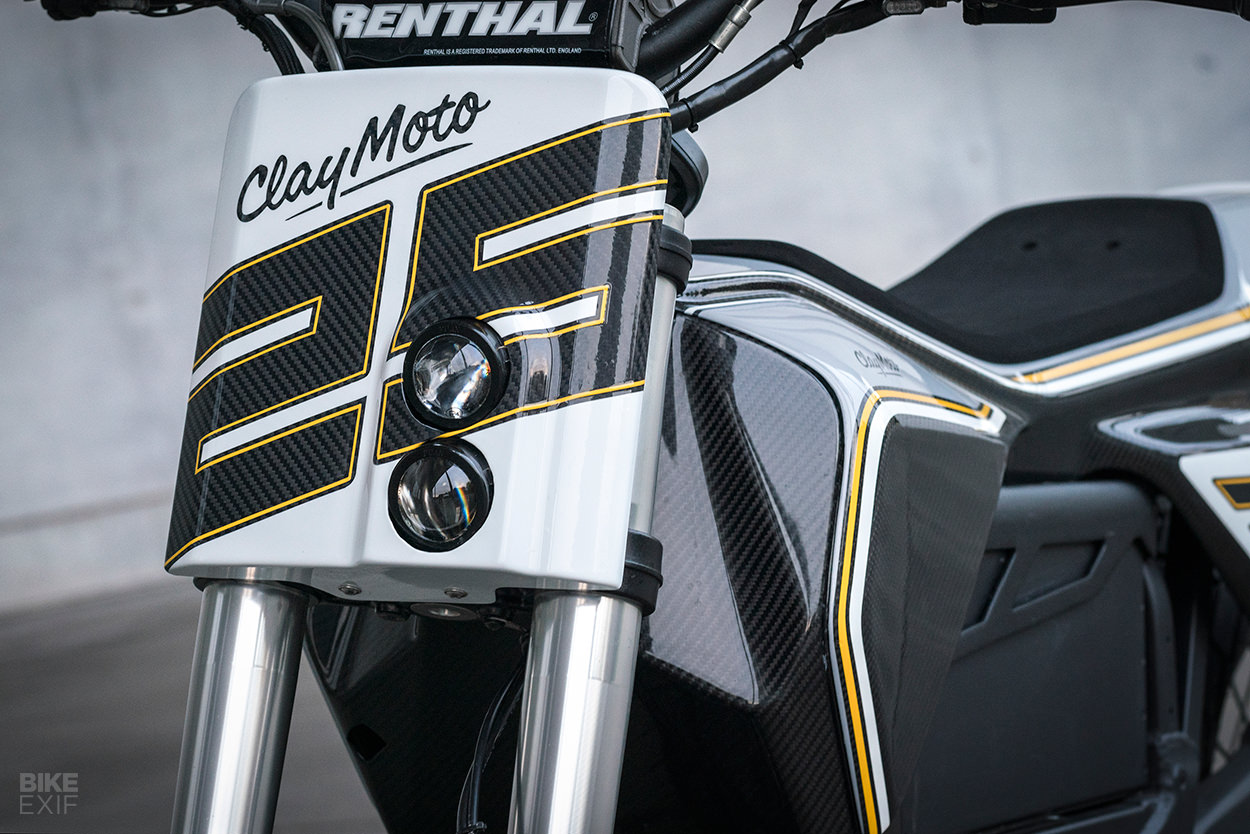
“The best motorcycle designs are a blend of emotion and engineering,” he explains, “and whilst CAD is a wonderful platform for developing engineering, the interface is not there yet to allow for great sculpted design surfaces—the kind which are crafted by a skilled human hand.”
“I’m excited to see where the prospect of modeling in a VR environment might lead us, but as it stands the best, state-of-the-art technology for design surface development is clay.”
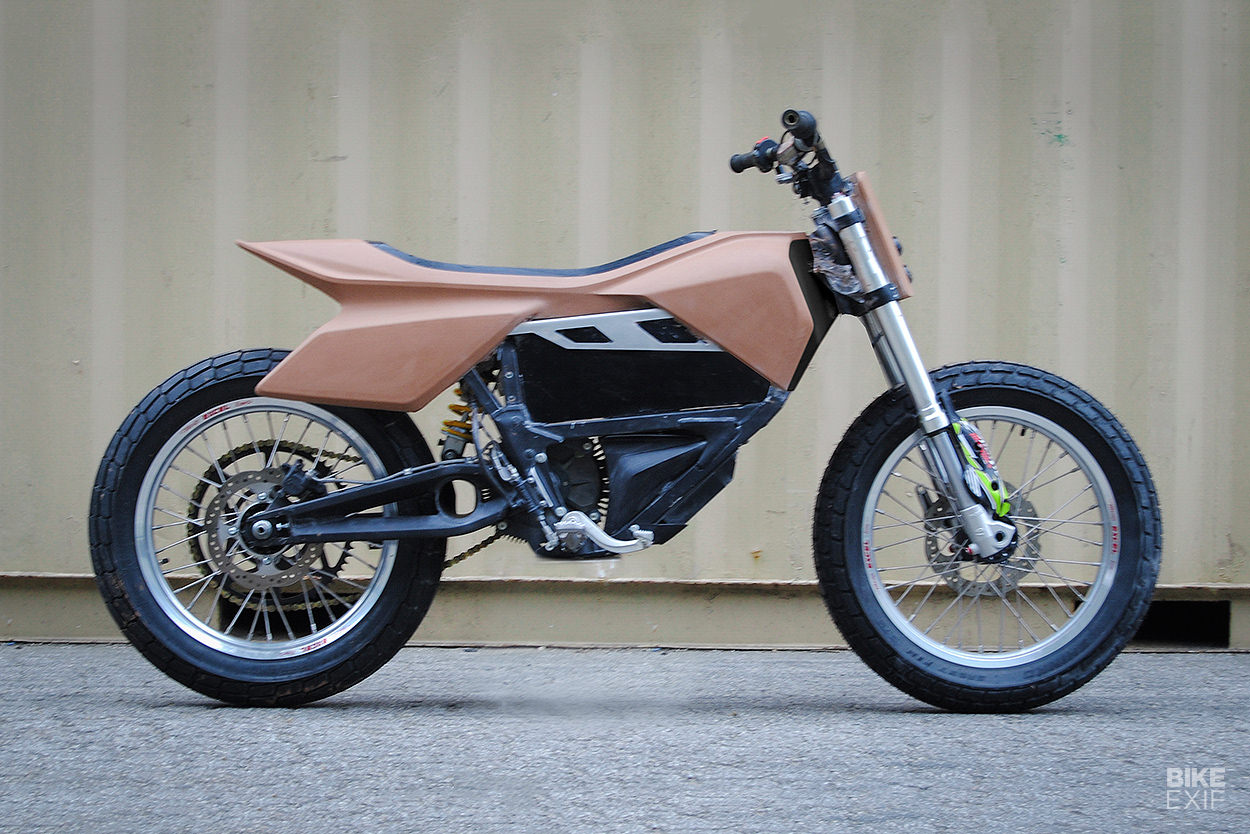
The actual clay model took Nick 80 hours to complete—even though he technically only modeled half of the bike. “I typically use a mirror on the centerline to save me having to model both sides,” he says. “It’s much faster, and allows me to see immediately how the clay looks in symmetry, so I can develop the form accordingly.”
Once the model was finished it was scanned, and rebuilt digitally in Alias AutoStudio—the industry standard for 3D modeling. Nick used Alias to remove any imperfections from the surfaces, and then used the renders to create a full size ABS plastic prototype to test fitment. With everything golden, he gave the go ahead for molds to be made, to produce the final kit in carbon fiber.
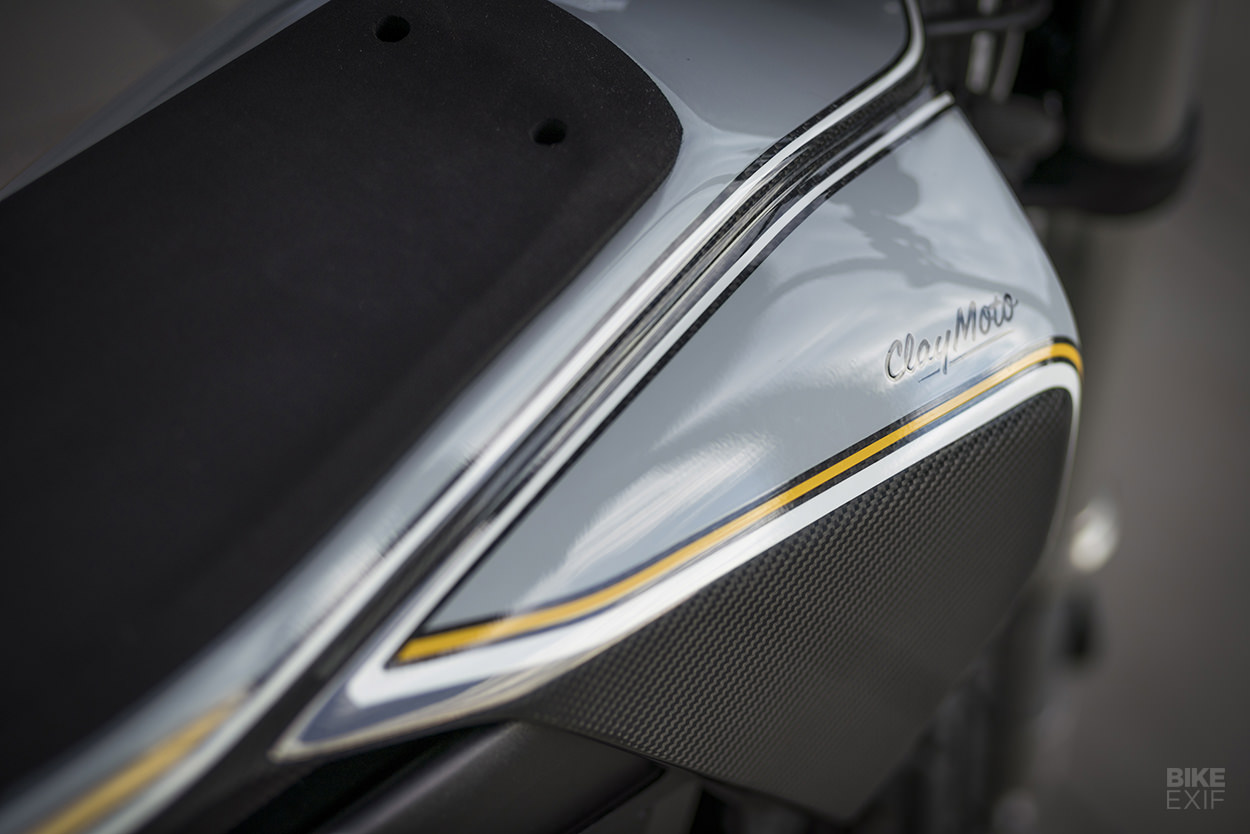
Nick couldn’t afford to have the molds and carbon fiber forms made in Europe, so he farmed them out to a firm in China.
“When I excitedly received the parts four months later my heart sank,” he says. “Although the carbon work was actually pretty nice, my finely tuned surfaces were all over the place with bumps and dents. Clearly corners had been cut in making the main body piece mold.”
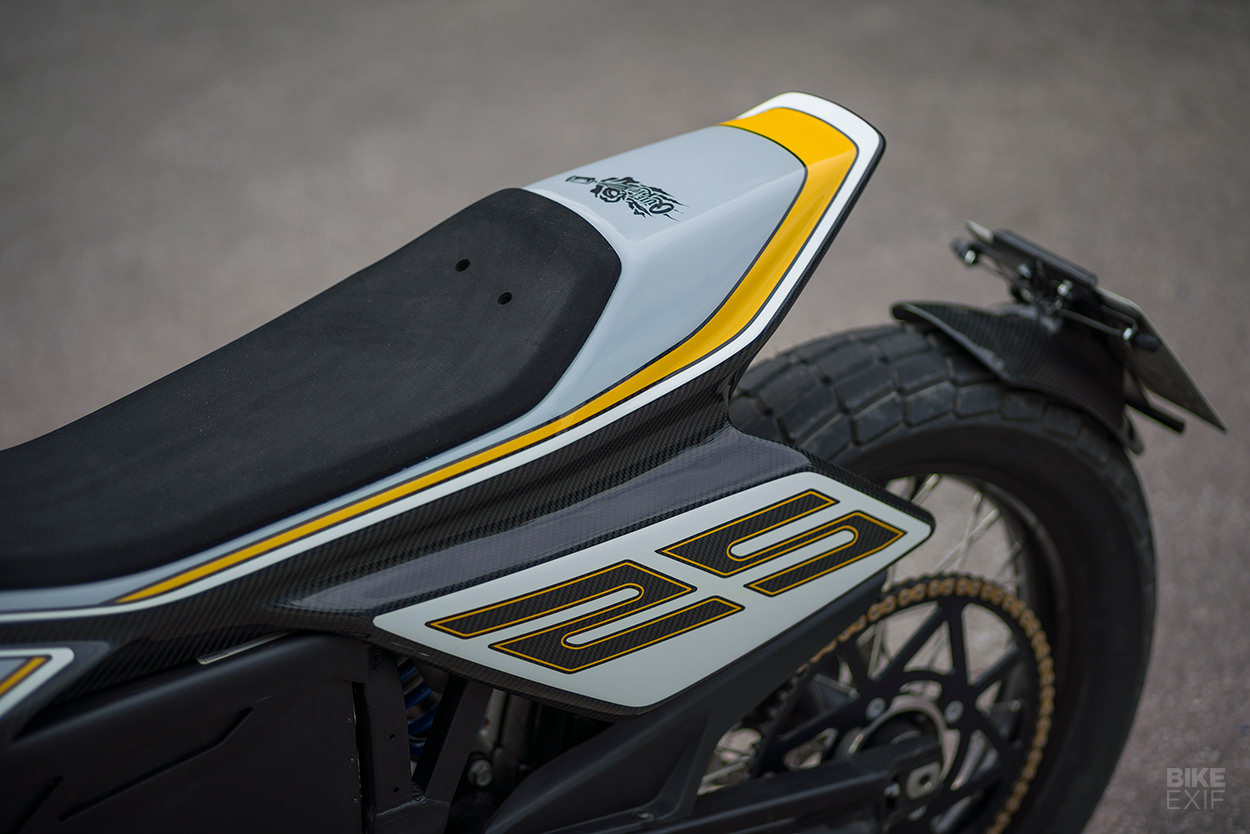
Nick ultimately had to make a jig to straighten out the part and resurface it by hand, before sending it back to China for a new mold to be made. All told, it took 10 months before he got the final parts back. “It was so worth it and the final parts are really good now,” he tells us, “weighing in at just 2.4 kg (5.3 lbs) for the complete set.”
The FX needed more than just new bodywork to turn it into a pukka flat tracker though. So Nick shortened the suspension at both ends, then added a pair of 19” Sun rims with Shinko flat track tires.
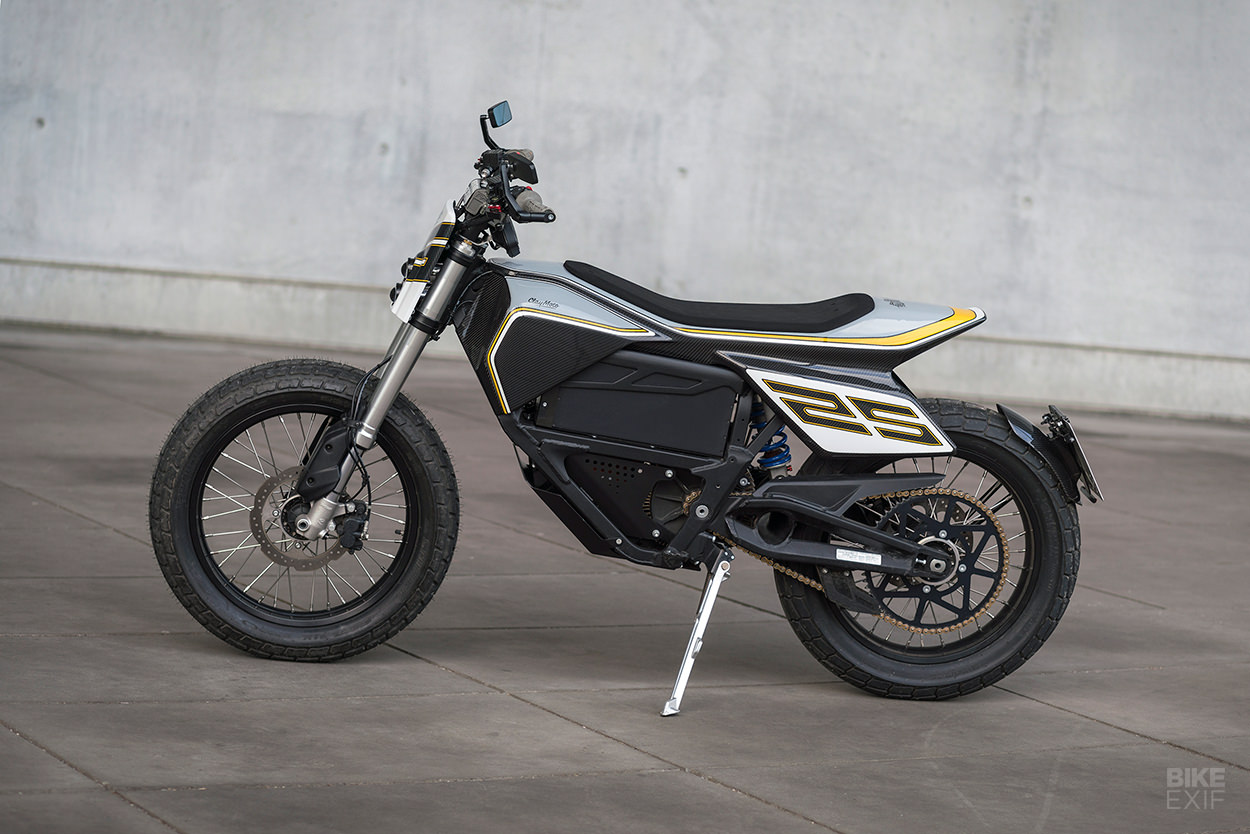
The OEM belt drive was swapped for a chain and sprocket kit. And since there’s no clutch, Nick ditched the foot brake in favor of a handlebar-mounted lever, “for better rear brake modulation while riding on circuit.”
Up front, he set up a custom number board with LED projectors, relocated the speedo to keep the look sano, and added flat track bars and grips from Renthal. There’s an aluminum bash plate lower down, along with a pair of protective side panels.
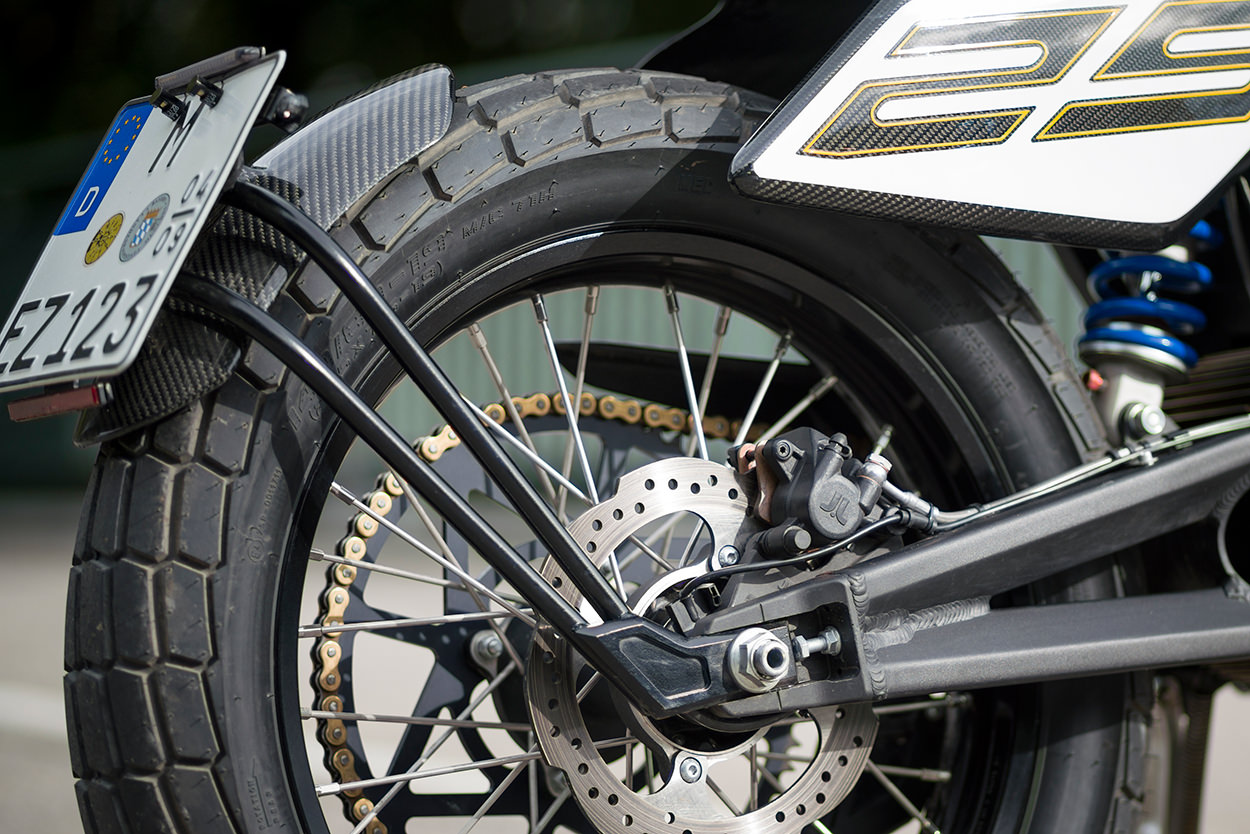
The license plate bracket mounted off the swing arm is a practical addition. It holds the plate and all the rear lights to keep the bike street legal, but it can be removed in minutes when it’s time to take to the track.
Nick had some help along the way, with Zero staffers Jamie, Eddie and Josh all pitching in. Jamie laced the wheels, Eddie drew up the CAD drawings for the aluminum bits, and Josh fabricated that rear hangar. Chris Adam laid down the sporty livery, leaving enough carbon fiber in view to get the message across.
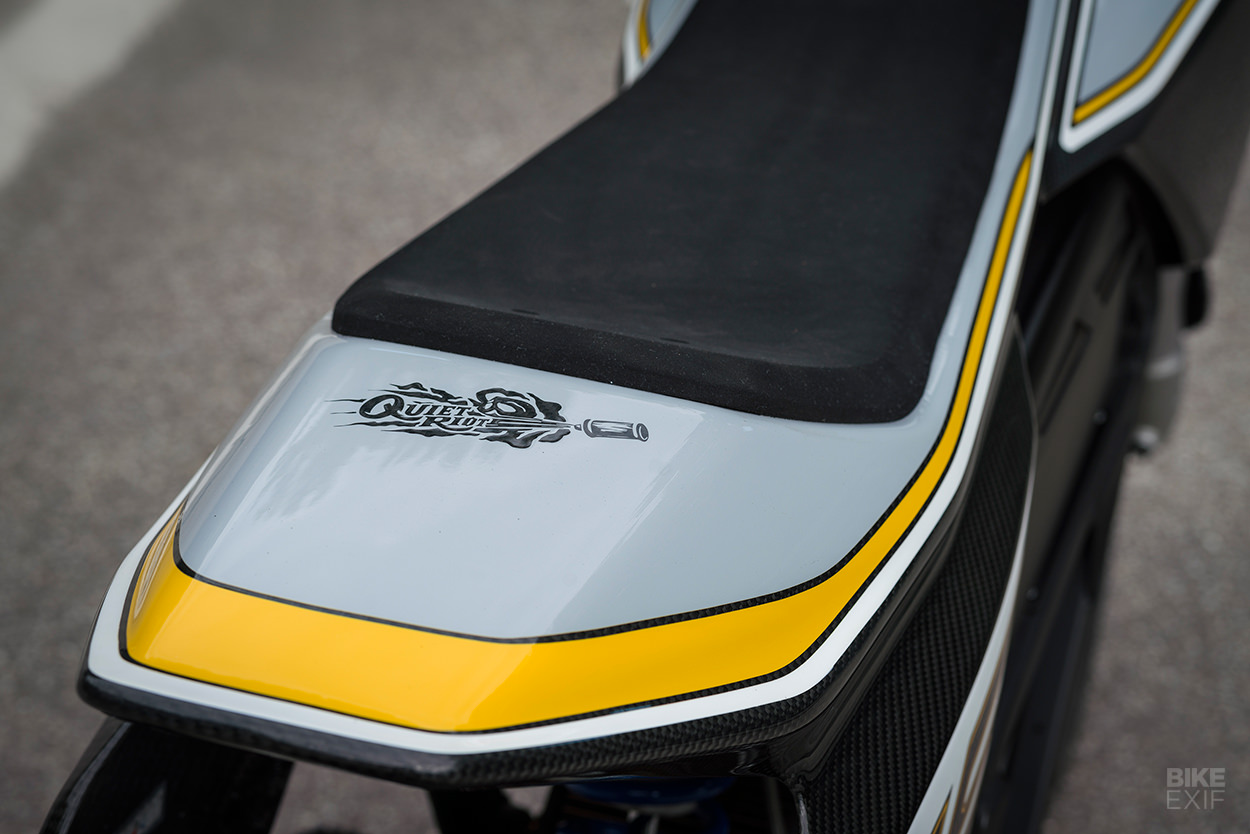
‘Quiet Riot’ is a great reminder of the importance of traditional craft, even when designing forward thinking machinery. And it’s a hella sharp looking flat tracker, too.
ClayMoto | Facebook | Instagram | Images by Andrei Matyukhin
